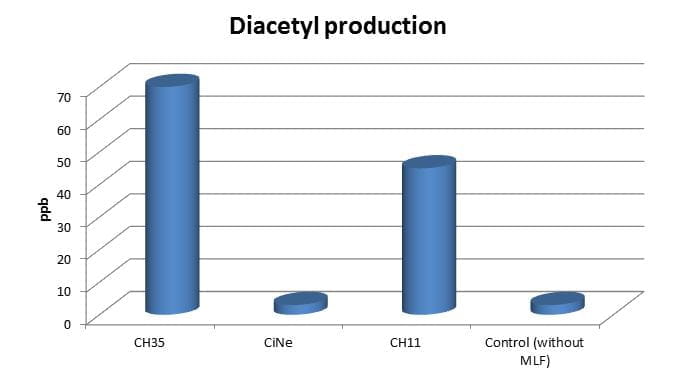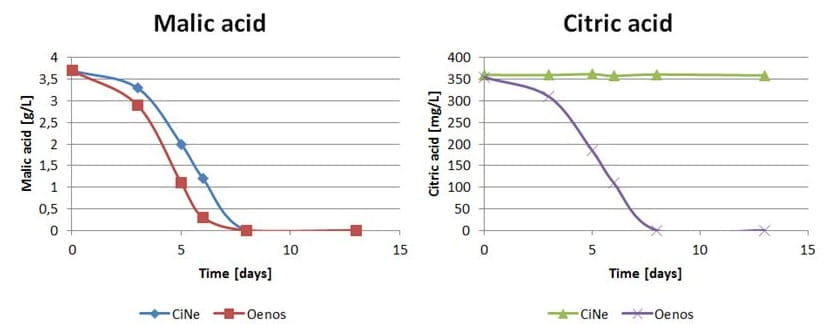VINIFLORA® CINE™ is a citrate-negative Oenococcus oeni selected for malolactic fermentation without producing diacetyl (figure 1).
VINIFLORA® CINE™ was launched in 2010 to meet an increased demand for balanced and fruity wines.
VINIFLORA® CINE™ enables winemakers to perform malolactic fermentation without producing buttery flavors, which are often associated with malolactic fermentation (figure 1). Other malolactic bacteria produce diacetyl from citric acid (figure 1). However, VINIFLORA® CINE™ is unable to convert citric acid to diacetyl, as it lacks the required enzymes to take up and utilize citric acid, making it citrate negative (figure 2).
VINIFLORA® CINE™ is widely used in elegant styles of white wine, e.g., Chardonnay, where structure, balance and crispness are in focus.
VINIFLORA® CINE™ is also popular for rose winemaking, where it is used to create a balanced and stable rose, without sacrificing the fresh and fruity characters of a good rose.
In the last couple of years, there has been an increased consumer demand for fresh and fruity red wine to be drunk young. VINIFLORA® CINE™ is ideal for production of these wines, as the winemaker gets the benefits of how malolactic fermentation feels on the mouth, while retaining the full fruit expression of the wine.
To increase the overall fruitiness, we recommend a combination of VINIFLORA® FROOTZEN® and VINIFLORA® CINE™.
VINIFLORA® CINE™ can be used for early co-inoculation, late co-inoculation as well as sequential inoculation.


